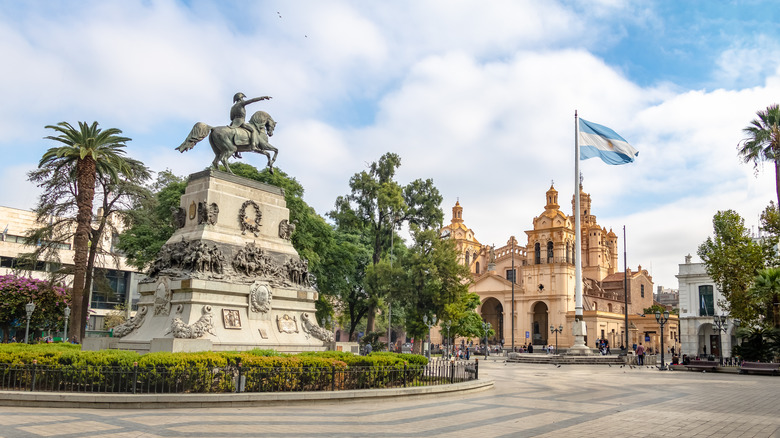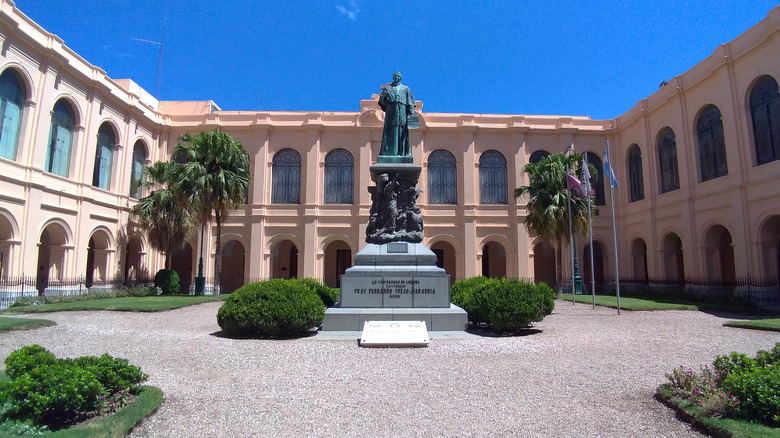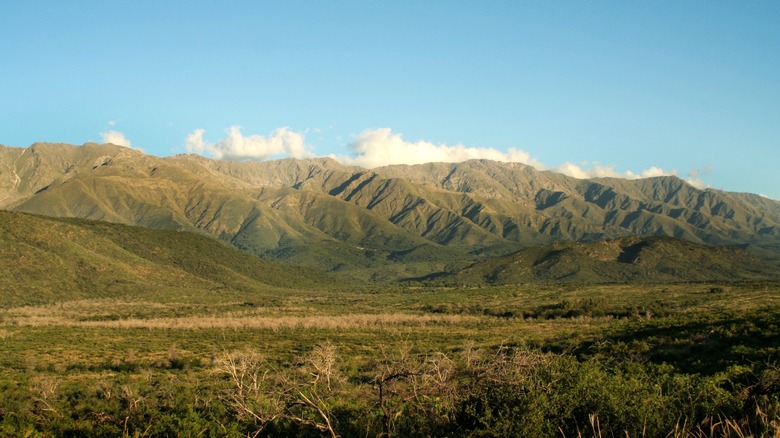One Of South America's Most Overlooked Cities Is A Gateway To Mountains With Unique Architecture
South America is filled with bucket list vacation destinations, and Argentina — the continent's second-largest country, bordered by Bolivia, Chile, Paraguay, Uruguay, and Brazil — has become popular for its rich history, diverse culture, and dramatic landscapes. From the wine regions of Mendoza and the Andes Mountains to the incredible Iguazu Falls (a once-in-a-lifetime vacation destination not to be missed) and Patagonia's glaciers, Argentina has plenty to offer. The capital, Buenos Aires, is a wildly underrated destination known as the Europe of South America, a lively city in its own right. But one of Argentina's lesser-known gems is the diverse and historic Córdoba.
Córdoba, Argentina's second-largest city, is both culturally significant and known for its incredibly well-preserved colonial architecture. It's also home to the country's oldest university, the National University of Córdoba, lending the city a youthful vibe. The city is surrounded by the majestic Sierras de Córdoba mountain range, offering visitors access to beautiful landscapes and outdoor activities. Less than an hour's drive from the city is Alta Garcia, where lies the revolutionary Che Guevara's childhood home, now a museum. A highly significant figure of Latin American culture and history, it's worthwhile visiting. Another way to enjoy the rugged surrounding landscape is to experience paragliding in the nearby town of La Cumbre, giving travelers a breathtaking aerial perspective of Argentina's landscape.
Explore Córdoba's eclectic architecture and historic sites
Marrying old and new, Córdoba is architecturally fascinating, visually dynamic, and highly creative. Alongside Spanish colonial buildings and neoclassical designs, the city showcases some of Argentina's best contemporary architecture. The Córdoba Cultural Centre, for example, features a sloped roof that doubles up as a public square designed for visitors to walk and interact with. The PSJ Chapel, a minimalist white structure, blends seamlessly into the natural surroundings, presenting a modern twist on traditional religious architecture. And, if you stroll by the Civic Center of Cordoba next to the city's railway station, you'll be able to catch a glimpse of its perforated concrete building, towering over the city's landscape.
The 400-year-old Jesuit Block and Estancias of Córdoba complex is a UNESCO World Heritage site that highlights Argentina's colonial heritage. Built by the Jesuit Order in the 17th century, it includes a church, a university, and agricultural estate buildings. Another unique site, the Paseo del Buen Pastor, once served as a women's prison and now functions as a cultural center featuring works by local artists, water fountains, and scenic courtyards. Close to Plaza San Martin, the Cathedral of Córdoba, a National Historic Monument since the 1940s, is another must-see. Nearby, Sarmiento Park, close to the National University of Córdoba, offers a lovely laid-back setting for relaxation by the lake or a visit to its on-site zoo.
Take a day trip to Córdoba's surrounding mountains and valleys
After soaking in Córdoba's urban charm, consider taking a day trip out of the city and exploring the surrounding rural landscapes. The Córdoba Mountains — or Sierras de Córdoba in Spanish — are the heart of gaucho cultures and traditions. This beautiful and scenic region offers outdoor enthusiasts opportunities for adventure and the chance to experience traditional village life. The mountain range includes Las Sierra Chicas, Las Sierras del Norte, and Las Sierra Grande, with tourist spots like La Cumbre or La Falda tucked in between. Charming small towns like Villa Carlos Paz and La Cumbrecita offer picturesque getaways. The Sierras are also perfect for birdwatching, hiking, and immersing yourself in nature.
Consisting of mountain peaks, valleys, and rivers, the Sierras offer varied landscapes. Calamuchita Valley, Punilla Valley, and Traslasierra Valley are within easy reach of Córdoba. In Traslasierra Valley's Condorito Gorge National Park, visitors can spot majestic condors in their natural habitat, while San Roque Lake in Punilla Valley provides a perfect spot to unwind and take a dip in pristine waters. Villa General Belgrano, a unique town located in Calamuchita Valley, around an hour and a half away from Córdoba, was established by German immigrants in 1930 and retains a strong Germanic influence. Alongside German cuisine and cultural celebrations like Oktoberfest, the town serves as a gateway to Argentina's rugged nature and diverse wildlife due to its remote location in the valley.


